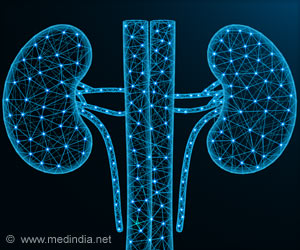
Machine-learning Helps Treat COVID-19 Patients With Acute Kidney Injury
The application of precise technologies that could predict the need for dialysis or the risk of mortality among patients would help healthcare personnel in the proper monitoring and management of patients’ health.
‘Patients with Acute Kidney Injury are more likely to develop severe COVID-19. The XGBoost machine-learning model without imputation outperforms the existing models in treating COVID-19’
“The near universal use of electronic health records has created a tremendous amount of data, which has enabled us to generate prediction models that can directly aid in the care of patients. A version of this model is currently deployed at Mount Sinai Hospital in patients who are admitted with COVID-19,” said lead researcher Dr. Girish Nadkarni of Mount Sinai.
Key drivers of the AI models
The researchers used the data from electronic health records of more than 6,000 adults with COVID-19 admitted to five hospitals within the Mount Sinai Health System from March 10 to December 26, 2020. Among the participants from five hospitals, patients admitted to Mount Sinai Hospital in Manhattan were used for internal validation while the other participants from the remaining four hospitals were considered as an external validation cohort.
Mount Sinai’s researcher, Dr. Lili Chan said, “As a nephrologist, we were overwhelmed with the increase in patients who had AKI during the initial surge of the COVID-19 pandemic. Prediction models like this enable us to identify, early on in the hospital course, those at risk of severe AKI (those that required dialysis) and death. This information will facilitate clinical care of patients and inform discussions with patients and their families.”
A total of five machine-learning models such as logistic regression, LASSO, random forest, and XGBoost with and without imputation were created and observed for optimization. All the above five models predict the expected outcomes based on some factors in the human body including red cell distribution width, creatinine, and blood urea nitrogen.
In addition to the laboratory results of the above factors, features like demographics, comorbidities, and vital signs within 12 hours of hospital admission were evaluated and recorded.
XGBoost model is good at performance
The XGBoost model without imputation was found to be outperforming the existing and also the other machine learning models developed in the study. For all time points, the XGBoost model without imputation had the highest areas under receiver and precision-recall curves on internal validation. The highest test parameters on external validation were also observed in this model across all time windows.
“Machine learning allows us to discern complex patterns in large amounts of data. For COVID-19 inpatients, this means being able to more easily identify incoming at-risk patients, while pinpointing the underlying factors that are making them better or worse. The underlying algorithm, XGBoost, excels in accuracy, speed, and other under-the-hood features that allow for easier deployment and understanding of model predictions,” said lead researcher Dr. Akhil Vaid of Mount Sinai.
Source: Medindia
Stay connected with us on social media platform for instant update click here to join our Twitter, & Facebook
We are now on Telegram. Click here to join our channel (@TechiUpdate) and stay updated with the latest Technology headlines.
For all the latest Health News Click Here
For the latest news and updates, follow us on Google News.

